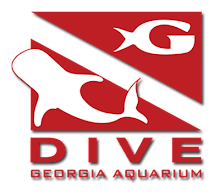
Like all great teams, we have a base of operations, aptly named the DiveLocker. Here we do everything from maintenance to filling tanks.
At our workbench a multitude of tools hang on the wall to be used readily whenever needed. Maintaining dive equipment, whether the equipment are BCs, regulators, umbilicals, etc., requires a lot of work and a lot of different tools. Both specialized and general use tools can be easily accessed.

Within the divelocker, there are always people hard at work to allow the dive operations in the aquarium to run smoothly, efficiently, and above all safetly. Volunteers interested in assisting the dive operations team are required to go through different courses in order to perform monthly maintenance checks on regulators, BCs, and umbilicals. These volunteers, once trained in what to look for, check to make sure the equipment is in good order. Considering how big the aquarium is, that is a lot of gear to perform monthly checks on. If a piece of equipment does not function as it should, it is set aside for the dive ops staff to inspect. The staff of the dive operations team are each highly qualified to maintain dive equipment.
Here at the Aquarium, we fill our tanks in house. Our compressor fills four cascading banks (each bank consists of two large cylinders). From these banks, we draw the air to fill the scuba tanks throughout the day.

A person must undergo Fill Station Operator (FSO) training in order to be allowed to fill tanks. Tanks are filled two at a time in our fill station using a cascade method. Basically, a bank of higher pressure is opened to equalize pressure with the cylinders being filled. Once the cylinders reach the same psi, that bank is closed and the next bank is opened. This is the most efficient method to fill scuba tanks.
There is always work to be done in the divelocker. Here, intern
Brittany is drying the inside of a newly cleaned tank after it was returned from its inspection.


No comments:
Post a Comment